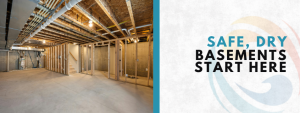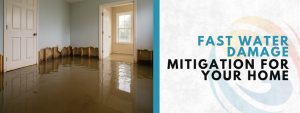
Have you ever noticed a crack zigzagging across your ceiling and thought, “Is this normal?” or “Should I be worried?” If so, you’re not alone. Many homeowners don’t realize that a small line above their head might be hiding a much bigger problem. Cracked ceilings aren’t just unsightly—they can be early warning signs that something serious is going on with your home.
Understanding cracked ceiling risk signs is essential because catching them early could save you thousands in repairs, prevent accidents, and protect your family. Some ceiling cracks are harmless. Others? Not so much. So, how do you tell the difference?
Let’s uncover the six key cracked ceiling risk signs every homeowner should be on the lookout for—and what to do if you spot them.
Long, Spreading Cracks That Widen Over Time
If you notice a crack stretching across the ceiling and growing day by day, that’s your home waving a big red flag.
These long, expanding cracks often point to:
- Foundation shifting
- Water damage is weakening support beams
- Seasonal structural movement
When ceilings show cracked ceiling risk signs like spreading or widening cracks, this usually means the material is under stress. Over time, gravity and moisture can cause drywall or plaster to buckle or separate, especially around load-bearing areas.
What to look for:
- Cracks longer than 2 feet
- A consistent width increase over weeks
- Jagged or stair-step patterns
These types of cracks should never be ignored. Homeowners sometimes dismiss them as age-related wear and tear, but widening cracks are rarely just cosmetic. If you’re unsure, having an expert inspect the site is always a smart move.
And if you’ve recently had a flood or leak, don’t wait to investigate. Getting quick help from a trusted restoration expert could make all the difference between a quick fix and a major renovation.
Cracks with Discoloration or Stains
Ceiling cracks are concerning on their own, but when discoloration appears along with them, it’s a double warning. Stains or yellowish marks often indicate water intrusion, which weakens the structural integrity of the ceiling material. This can cause ceilings to sag or, in worst cases, collapse.
If you spot any combination of these cracked ceiling risk signs:
- Brown, yellow, or rust-colored water stains
- Cracks that feel damp to the touch
- Flaky paint or bubbling around the area
…it’s time to act fast. Water from roof leaks, broken pipes, or upstairs bathroom mishaps can soak the drywall, leaving it soft and vulnerable to collapse. Even worse, dampness encourages mold to grow.
Here’s a quick checklist to assess water-related cracks:
| Visual Clue | Meaning |
| Yellow rings | Drying water from an earlier leak |
| Brown blotches | Persistent moisture from an active leak |
| Black streaks | Potential mold presence |
| Peeling paint | Ongoing water damage |
By recognizing these stained or damp cracked ceiling risk signs, you can prevent damage from spreading to your walls, flooring, and insulation. If caught early, professionals can use moisture readers to detect hidden problems and perform targeted water damage repairs before things escalate.
Cracks Near the Corners of Walls or Around Door Frames
Cracks don’t always start in the middle of the ceiling. Sometimes, they sneak in from the sides—appearing where the ceiling meets walls or near doors and windows. These diagonal or corner-adjacent cracks can signal shifting foundations or uneven load distribution.
Typical causes include:
- Settling soil under your foundation
- Poorly aligned framing
- Temperature-related expansion and contraction
When you see cracked ceiling risk signs forming diagonally from a corner, it means the home is possibly shifting in one direction more than another. If that movement continues, it could eventually impact windows, doors, and the ceiling structure itself.
Look for these additional clues:
- Doors or windows sticking or not closing properly
- Gaps forming between walls and ceilings
- Cracks follow an angled path rather than a straight line
These aren’t your everyday minor plaster splits. Cracks that line up with corner seams or seem to “follow the frame” are often a sign of foundation instability. That kind of movement—especially in older homes—requires professional evaluation and possibly structural reinforcement.
Don’t wait until your ceiling gives in. When cracked ceiling risk signs appear near corners, you need to address them as potential structural concerns rather than simply cosmetic flaws.
Web-Like Cracks Covering Large Areas
Spiderweb cracks, while small and shallow, often span wide areas of the ceiling. On the surface, they might seem like no big deal—just normal aging. But if they suddenly appear or grow larger, they could be an early sign of a deeper issue beneath the plaster or drywall.
You may spot these as:
- Circular or web-like crack patterns
- Tiny surface lines in clusters
- A dusty or chalky texture along the lines
Even though these cracks are thin, they might signal underlying issues like:
- Humidity fluctuations weaken drywall
- Roof sagging or insufficient bracing
- A previous ceiling repair job that wasn’t sealed properly
Spiderweb cracks that show up overnight or suddenly change shape shouldn’t be brushed off. In humid climates, expansion and contraction of ceiling material are common. However, consistent cracking across rooms or spanning walls and ceilings suggests something more serious.
Use this simple test to determine the threat level:
- Tape a small piece of clear plastic wrap over the crack.
- Check back in 24–48 hours.
- If moisture collects underneath, you’re dealing with trapped humidity or a hidden leak.
Knowing how to interpret cracked ceiling risk signs like these lets you catch invisible issues before they erupt into full-blown repairs. If you live near coastal areas or high-humidity zones, check for this pattern often.
Ceiling Cracks Accompanied by Sagging or Bulging
One of the most alarming sights for any homeowner is a ceiling that looks like it’s ballooning downward. If your ceiling sags or appears lumpy, and visible cracks are spreading around the area, you could be in immediate danger.
Cracked ceiling risk signs tied to sagging usually include:
- Large cracks surrounding a visibly drooping spot
- Bubbled or puffed drywall panels
- A hollow sound when tapped
This type of crack isn’t just a cosmetic concern. It usually means the ceiling is failing under weight, moisture, or both. Over time, the attachment between the ceiling and joists can weaken—especially if there’s water damage or poor insulation.
Let’s compare safe vs. unsafe scenarios:
| Ceiling Condition | Risk Level |
| Slight hairline cracks with no bulge | Low risk |
| Cracks with sagging drywall | Moderate to high |
| Cracks plus visible ceiling detachment | Emergency repair needed |
If you’re unsure whether your ceiling is drooping or just has uneven texture, take a flashlight and shine it sideways across the surface. Shadows will help you spot any bulging areas. Sagging often hides itself in daylight.
When cracked ceiling risk signs combine with sagging, the best course of action is to consult a contractor right away. It may involve replacing panels, drying out insulation, or fixing leaks—especially if the attic or roof is compromised.
Cracks Appearing After a Weather Event or Renovation
Timing tells a story. If ceiling cracks show up right after a storm, a flood, or major remodeling, there’s a clear connection. Your home has undergone sudden stress, and your ceiling is showing it.
Cracked ceiling risk signs that emerge after:
- Heavy rainfall or roof leaks
- Burst pipes or flooding
- Major construction or wall removal
- Earthquakes or tremors
…are warning you that something shifted, got wet, or was disturbed. During remodeling, load-bearing beams can be unknowingly weakened. After storms, rain may leak in through the roof or attic, causing ceilings to crack or sag under the weight of absorbed water.
What’s tricky is that these cracks don’t always appear immediately. Some show up days or even weeks later.
Watch out for:
- Cracks that run parallel to structural beams
- Faint lines that deepen after a week
- Any sound of dripping or musty odors
Even if the weather seems to have passed or the renovation is over, don’t let your guard down. Hidden water damage can creep silently behind the scenes. Many homeowners in coastal or storm-prone regions have shared stories about cracks showing up days after the skies cleared.
To protect yourself long-term, make post-event inspections a regular part of your home care routine. If you’ve experienced a leak, especially in upstairs bathrooms or attics, you can find expert help to assess potential ceiling hazards before the next big storm hits.
Quick Reference: Common Cracked Ceiling Risk Signs and What They Mean
Here’s a handy guide for quick comparison:
| Crack Type | Possible Cause | Action Needed |
| Long spreading cracks | Foundation shift | Professional inspection |
| Stained or discolored cracks | Water leak or mold | Leak detection and drying |
| Cracks near corners or door frames | Settling or framing issues | Structural evaluation |
| Spiderweb cracks | Humidity or aging drywall | Monitor for spreading |
| Cracks with sagging | Ceiling weight or water damage | Immediate repair |
| Cracks after storms or renovations | External force or disturbance | Damage assessment |
Final Thoughts: Stay One Step Ahead of Ceiling Cracks
Cracks in your ceiling aren’t always dangerous, but they’re never something to ignore. By recognizing these six cracked ceiling risk signs, you can take control before problems spiral into major repairs. Think of your ceiling like a warning light in a car—when it signals you, you don’t ignore it. You take action.
Whether it’s a faint web or a large droop, the message is the same: something’s happening above you, and it deserves your attention. With the right eyes—and the right timing—you can spot the danger early and protect your home from bigger problems.
And if you’re ever unsure, don’t hesitate to reach out to professionals who specialize in identifying moisture, damage, or structural risks. It’s always better to be safe than sorry, especially when it comes to the ceiling over your head.
Frequently Asked Questions About Cracked Ceiling Risk Signs
How do I know if a ceiling crack is serious or just cosmetic?
If the crack is long, widening, or near corners and door frames, it could be serious. Cosmetic cracks are usually thin, surface-level, and don’t grow over time.
What should I do if I notice water stains around my ceiling cracks?
Water stains often mean there’s an active leak or past water damage. It’s best to have a professional inspect for hidden moisture or mold.
Are small spiderweb cracks in the ceiling a cause for concern?
Small web-like cracks can be from aging or humidity, but they should still be monitored. If they grow or spread, have them assessed by an expert.
Can cracked ceilings be a sign of foundation problems in my home?
Yes, especially if the cracks are diagonal or appear near corners and door frames. These types usually indicate shifting or settling foundations.
Should I fix a ceiling crack myself or hire a professional?
Hairline cracks can be patched DIY, but wide, stained, or sagging ones need expert attention. Safety and hidden damage are best handled by professionals.






